
Prinzregentenstrasse (Prinzregentenstraße) is one of the main streets of Munich, which is one of the four Royal avenues of the city (urban boulevards).
Street also known as street Prince Regent street Prince Regent street or Prinzregenten (Prince Regent Street).
The Avenue was constructed from 1891 as a main street for the middle class by order of the Prince Regent of Bavaria Luitpold, and named in his honor.
Prinzregentenstrasse stretches parallel to another royal avenue - Maximilianstrasse (Maximilianstraße), from the northeastern outskirts of the historic old town of Munich in the eastern direction of the city to the confluence with the street Einsteinstrasse (Einsteinstraße).
The length of the street the Prince Regent is about 3 kilometers.
The most interesting and visited part of the street Prince Regent is from the famous Von-der-Tann-straße (Von-der-Tann-Strasse) on the outskirts of the old town of Munich and Prinzregentenplatz (Prinzregentenplatz).
Along the street there are: the Palace of Prince Charles, house of art, English garden, Bavarian national Museum, gallery Shaka memorial angel of peace, with an observation deck, Villa stuck, the theatre of the Prince Regent, the stadium of the Prince Regent and the Church of St. Gabriel.

The Palace of Prince Charles (Prinz-Carl-Palais-Brunnen) marks the Western end of the street Prinzregentenstrasse and is located at the address: Königinstraße, 1.
The Palace was designed in 1803 by architect Karl von Fischer and built in the style of early Neoclassicism in 1804-1806, as a private residence for the Abbot Pierre de Calabera, a former teacher of king Maximilian I Joseph of Bavaria.
After the death of Abbot Salabert in 1807, Maximilian I acquired the building. After his death in 1825, his son Ludwig I transferred the building to his brother Prince Charles. After Carl's death the Palace was a place of diplomatic missions of Austria-Hungary in 1876, and then became the residence of the Bavarian Prime Ministers in 1924.
Location and architectural elegance of the building make it an Executive place, well suited for state guests and for major ceremonies.

House of art (Haus der Kunst) was built from 1933 to 1937 in the neoclassical style with the personal participation of Adolf Hitler at the Floor plans of Ludwig rope-hauled light as the "House of German art".
Today in the house of art organized and demonstrate a variety of contemporary art exhibitions and thematic exhibitions. Private collection house of art has not.
The walls of the building are also: archival gallery, where the artist Martin Schmidl has collected furnishings and exhibits reflect the history of the art (available for free), as well as a bar and night club P1, located in the basement.
The address of the house of art: Prinzregentenstraße, 1.
Website of the art: hausderkunst.

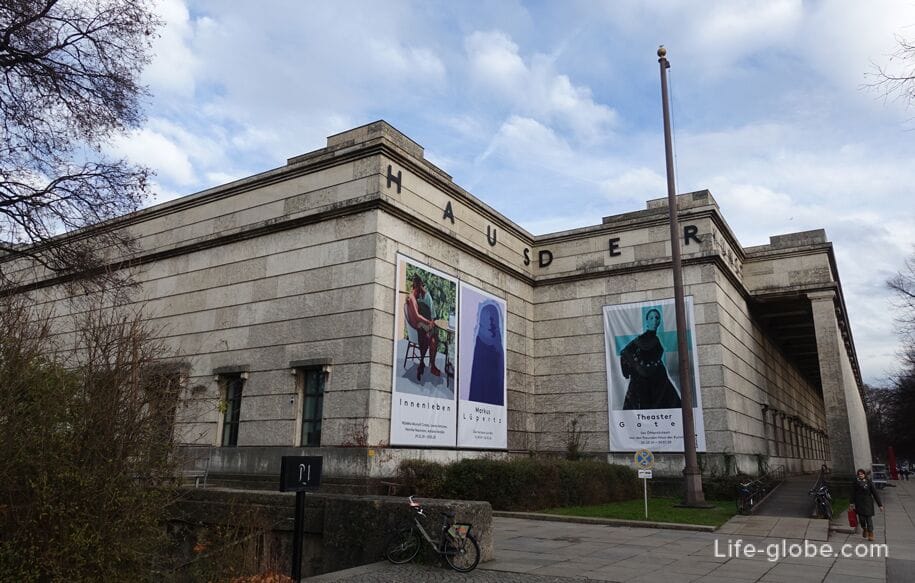
From the North-West side of the street Prinzregentenstrasse adjacent English garden (Englischer Garten).
English garden - a large public Park in Central Munich, which is one of the largest urban parks in the world, which has existed for more than 230 years.
Currently, the English garden of Munich is a popular place for walks, rest and sport activities.
In the Park there are: the wave of the Eisbach, which is visible from the street of the Prince Regent; Japanese tea house; monomer rotunda in the Greek style, and now an observation deck; Chinese tower; beer gardens etc read More about English garden...
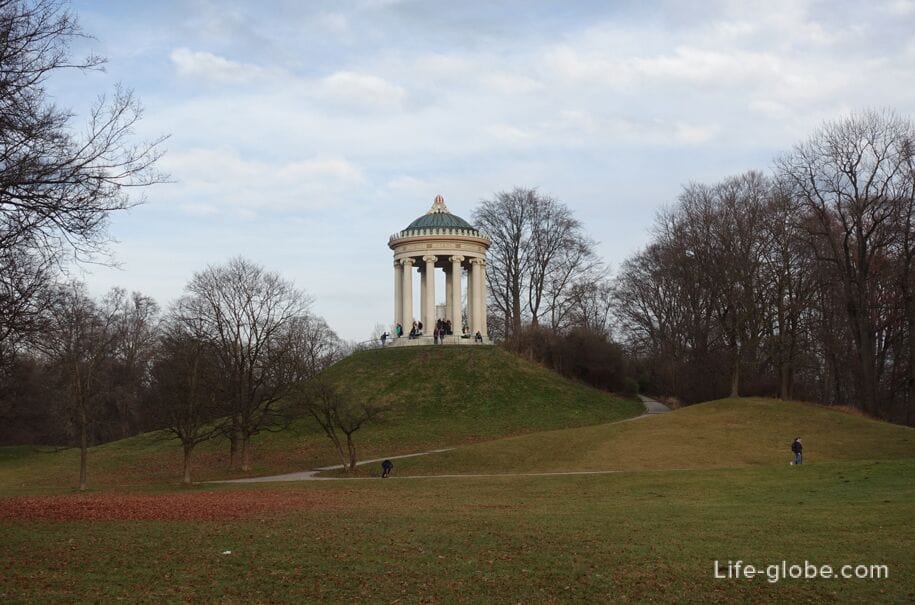

Bavarian national Museum (Bayerisches Nationalmuseum) is one of the most important museums in Munich, the Museum branches which are extensively located outside of the city.
Today the Museum is one of the most important museums of decorative art in Europe and one of the largest art museums in Germany.
The main Museum building, located at: Prinzregentenstrasse 3, designed in an eclectic style, and in front is placed an equestrian statue of the Prince Regent Luitpold. Read more about Bavarian national Museum.
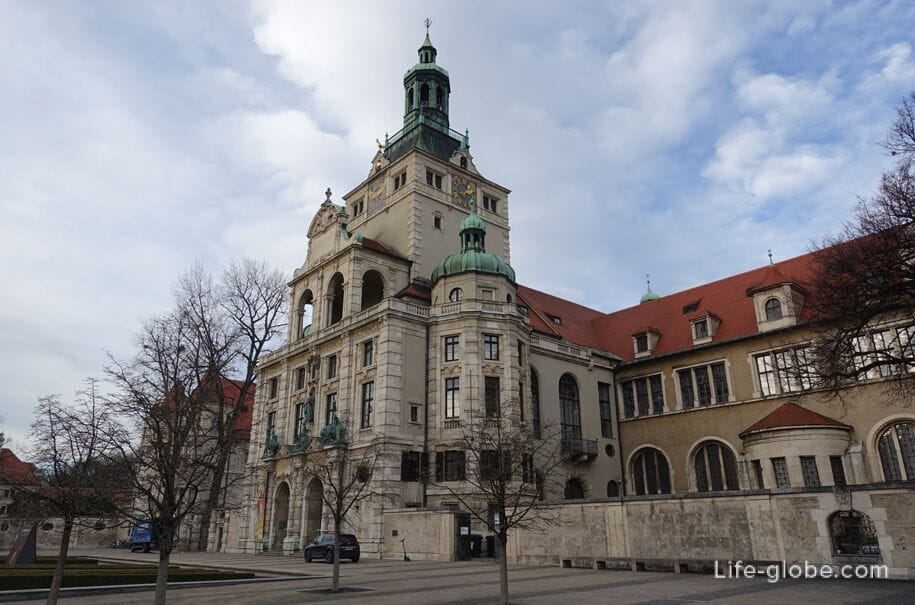
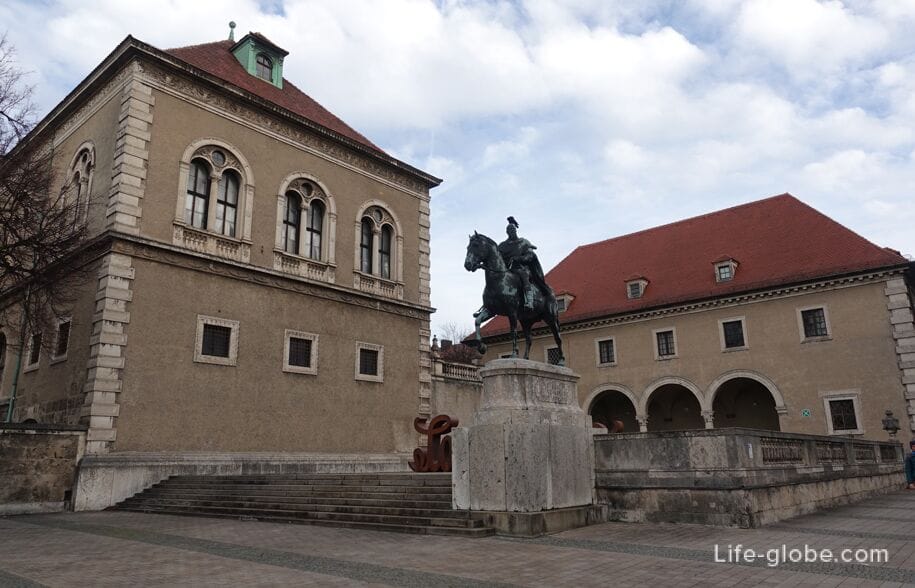
The building of the Bavarian state Ministry of Economics, state development and energy (Bayerisches Staatsministerium für Wirtschaft, Energie und Landesentwicklung) was built in 1935 - 1936, the German architect and University Professor Johann Georg Herman Bestelmeyer.
The Ministry of economy of Bavaria is set in 1945 in the former command post of the Luftwaffe.
Building address: Prinzregentenstraße, 28.
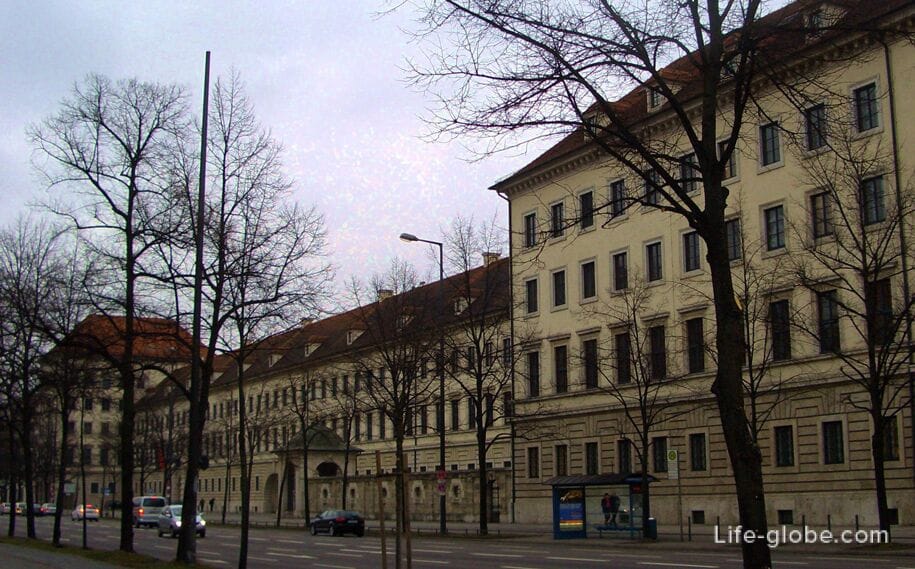
Shaka collection (Sammlung Schack) until 2009 known as the gallery of Shaka (Schack-Galerie), in 1909 located in the building at the address: Prinzregentenstraße, 9 and is one of the most important collection of paintings German painting of the 19th century in Bavaria.
The gallery originated from the collection of count Adolf Friedrich von Shaka, versatile literary writer and collector who since 1857 had created in Munich, the collection of contemporary art.
In the gallery presents about 180 paintings by famous German artists, including the works of Arnold Bocklin, Moritz von Schwind, Franz von Lenbach, Hans von Mares and Anselm Feuerbach.
In addition to the works of German artists Shaq collected the copies of the masterpieces of the 16th and 17th centuries, primarily from the Venetian artists.
The building itself, which houses the collection, was designed by max Littman and built in 1907-1909 years. In relief of the facade in the front of the posted two eagles and a coat of arms designed and made by the sculptor Julius Seidler in 1908.
The website gallery Shaka: sammlung-schack. Read more about Shaka...

Behind the gallery Shaka street Prinzregentenstrasse flows smoothly into the Luitpold bridge over the river ISAR, which became the street of the same name.
The Luitpold bridge (Luitpoldbrücke / Luitpoldblock) was built in 1891 as part of Prinzregentenstrasse and paid for by the Prince-Regent Luitpold from its own funds.
Initially, the bridge was steel. After the September floods in 1899, the bridge collapsed. In 1901, when financing Luitpold was built a new stone bridge, which still exists today.
The bridge is decorated with four large stone sculptures symbolizing the four Bavarian part. Read more about Luitpold bridge...

Bridge Luitpold leads to the memorial angel of peace (Friedensengel / Friedensengel), dedicated to the 25th anniversary of the peace Treaty after the Franco-Prussian war of 1870-1871 years.
Peace monument consists of an open square temple, built in Greco-Ionian pattern, and high columns in the Corinthian style, which is decorated with a bronze figure of a Golden angel.
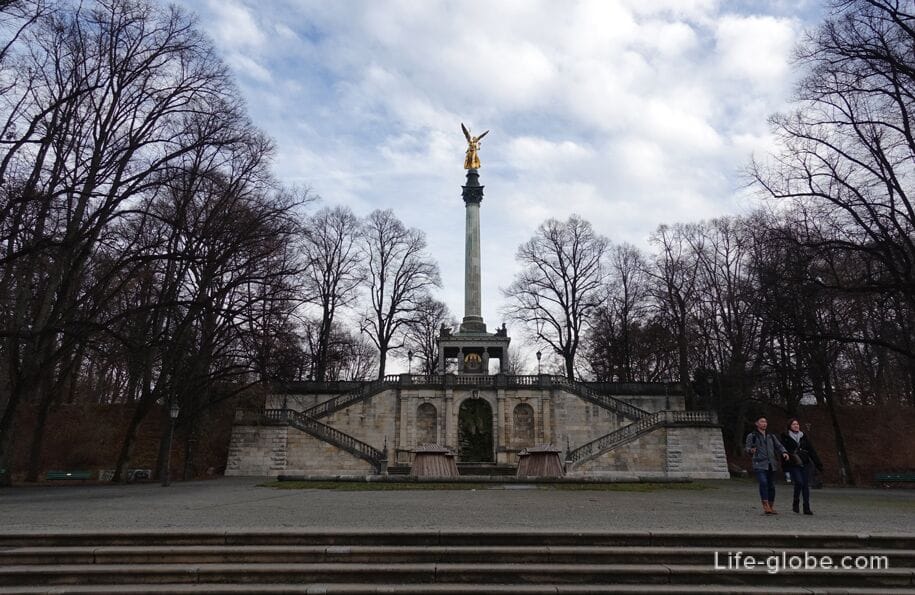
Near the column is open area - terrace Prinzregent-Luitpold (Prinzregent-Luitpold-Terrasse), with a panoramic view of the street Prinzregentenstrasse and part of the historic center of Munich. Read more about memorial angel of peace and observation...
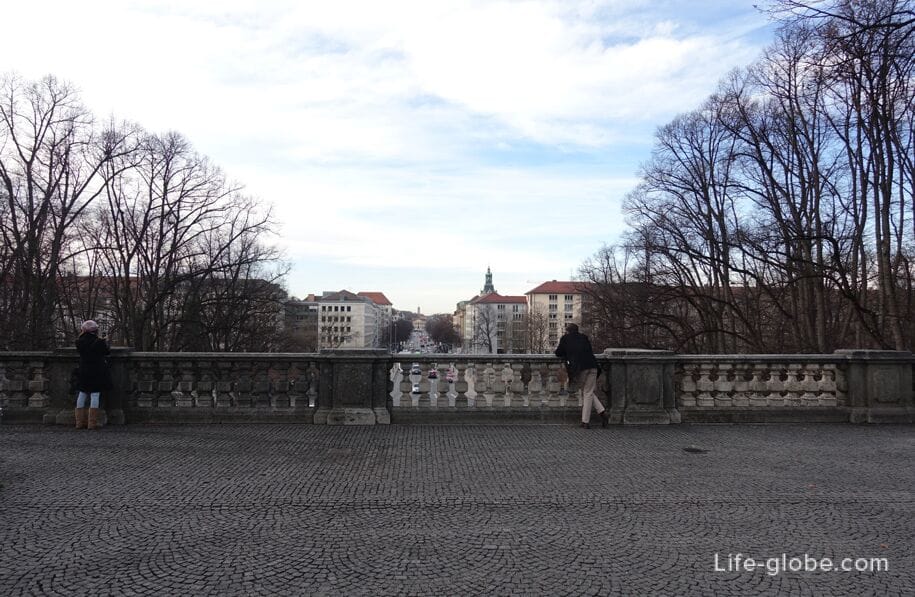
Villa stuck (Villa Stuck) - the historic Villa, which was originally a private mansion, built in the years 1897-1898 in modern style to the German painter and sculptor Franz von stuck.
Since 1992, the walls of the Villa houses the Museum of Villa Thing, which presents stored historical room of the Villa with furniture, the artist's Studio, a collection of the works of Franz von stuck and exhibits of applied art of the 19-20 centuries. The Museum also Thing temporary exhibitions, including contemporary art.
Address of the Villa Thing: Prinzregentenstraße, 60. Read more about the Villa Thing, and the Museum...
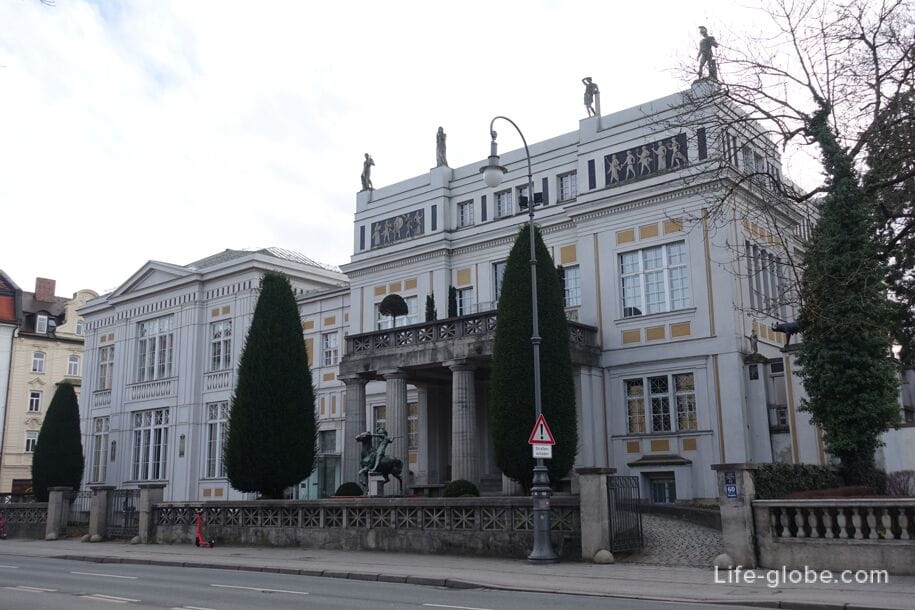
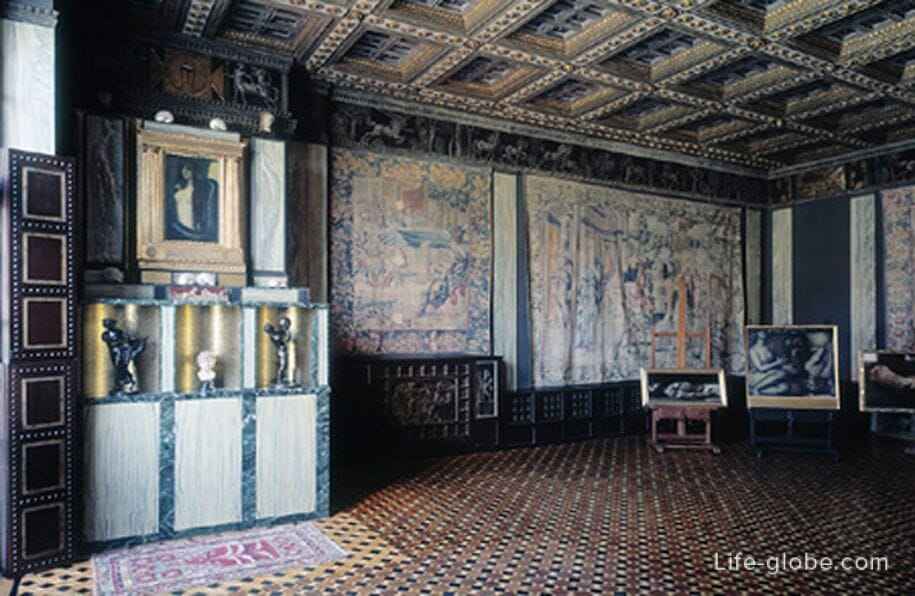
The building is located at the address: 73 Prinzregentenstrasse, was built in 1904 in a lavish mixture of styles of the German neo-Renaissance and historicism according to the plans of Lorenzo Krieg.
Today in the main part of the building there is the restaurant "taverna beetle" (Käfer-Schänke).
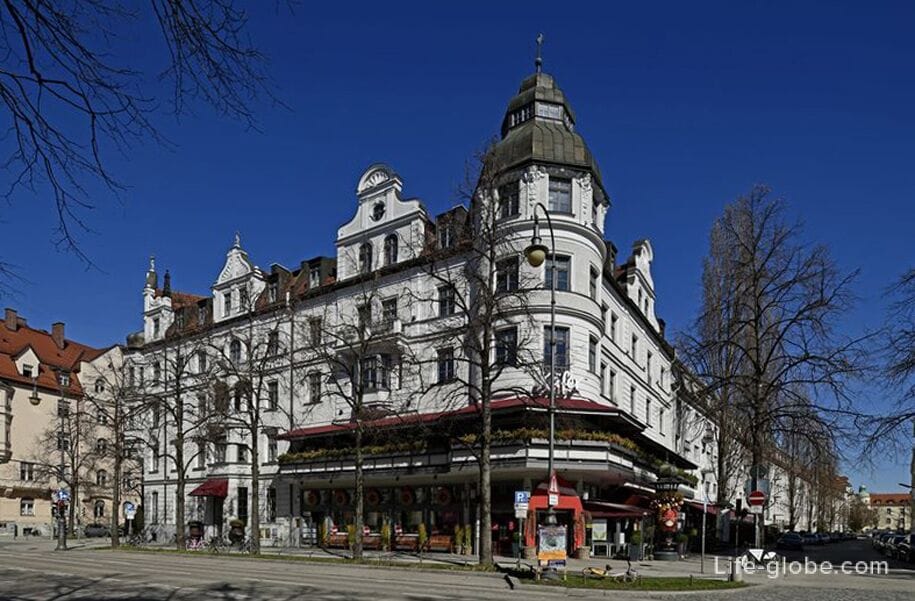
Stadium of the Prince Regent (Prinzregentenstadion) was opened on 16 Dec 1933 Friedrich Trancem on its own territory as an artificial open-air ice rink - the first of its kind in southern Germany.
Originally the stadium had only wooden buildings. In 1936 it was expanded and in the summer functioned as an outdoor pool. During the Second world war the stadium was destroyed and rebuilt in 1946-1948 years. In 1957, the stadium was handed over to the city.
In the late 90-ies discussed the issue of the demolition of the stadium. Only after a tough civil protests (" save the Prince! ") the new building was approved in February 2001, and demolition began in April. In 2003, the stadium was re-opened.
At any time of the year in mills stadium has a sauna, steam bath, swimming pool, yoga Studio, Wellness center, Barber shop and restaurant "aquamarine" (Aquamarin Restaurant). Summer - outdoor pools, slides, lawn and children's Playground. Skating in winter.
Stadium address: Prinzregentenstraße, 80.
Website: prinzregentenstadion.
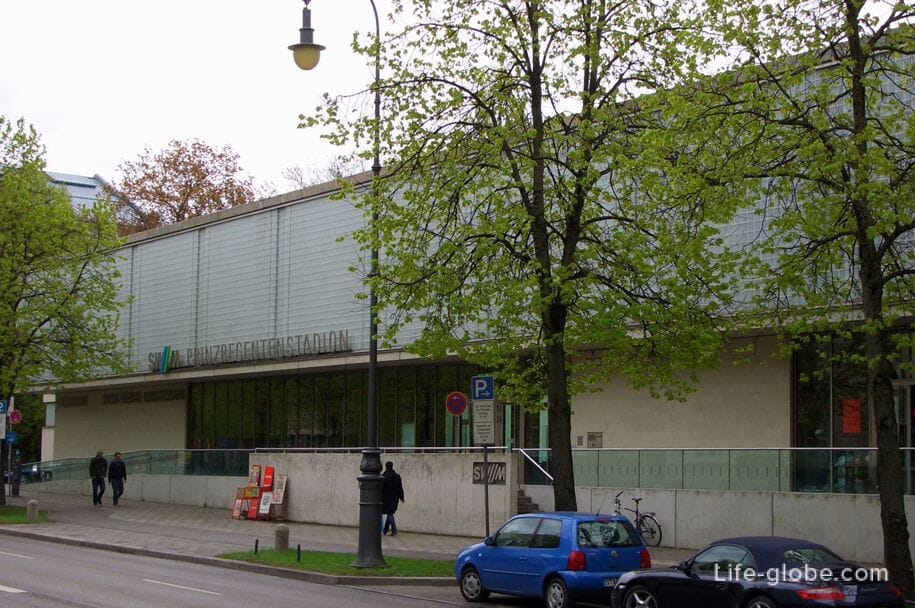
The theatre of the Prince Regent (Prinzregententheater) was built of cast stone between 1900 and 1901 years by the architect max Littmann.
The theatre was opened on 21 August 1901 the Opera "the mastersingers of Nuremberg" (Die Meistersinger von Nürnberg) by Richard Wagner, which is considered one of the peaks of creativity of Wagner.
During the Second world war was destroyed a restaurant, the theatre was rebuilt in 1957-58, cropped on one axis.
The program of the theatre today includes performances of classical music, Opera and dance performances.
The theater is located on the square Prinzregentenplatz (Prinzregentenplatz), building number 12.
The website of the theatre: theaterakademie.
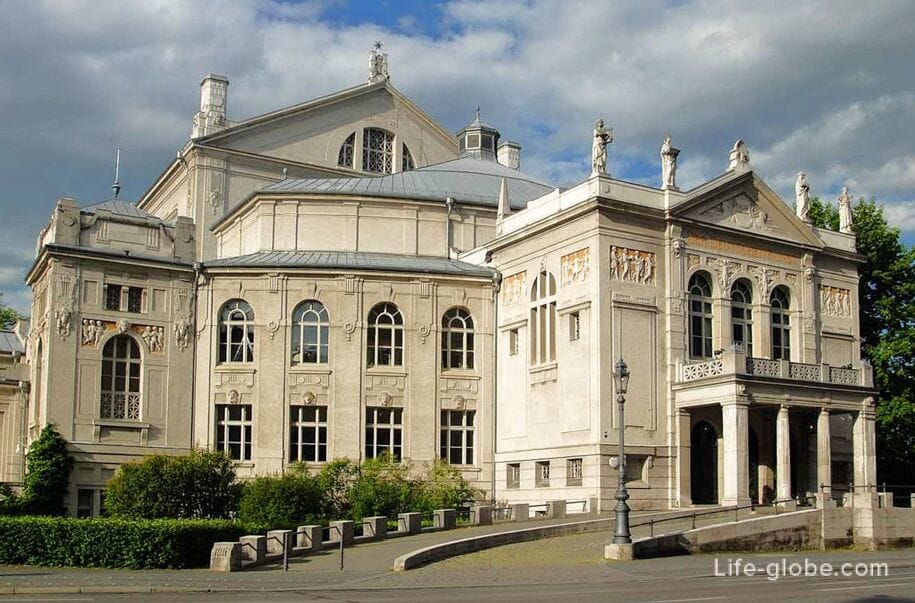
Besides theatre, the Prince Regent on the square Prinzregentenplatz (also known as the square of the Prince Regent) notable houses of the gründerzeit, the fountain installed in the center of the square and a small square, which adorns the monument of the composer Richard Wagner (Richard-Wagner-Denkmal) works of Henry Vadere, which was opened on may 21, 1913 - the day before the 100th anniversary of the composer.
The house at number 16 on the square of the Prince Regent was the apartment of Adolf Hitler, now this building houses the police Department.
The square is the eponymous station of the Munich underground.
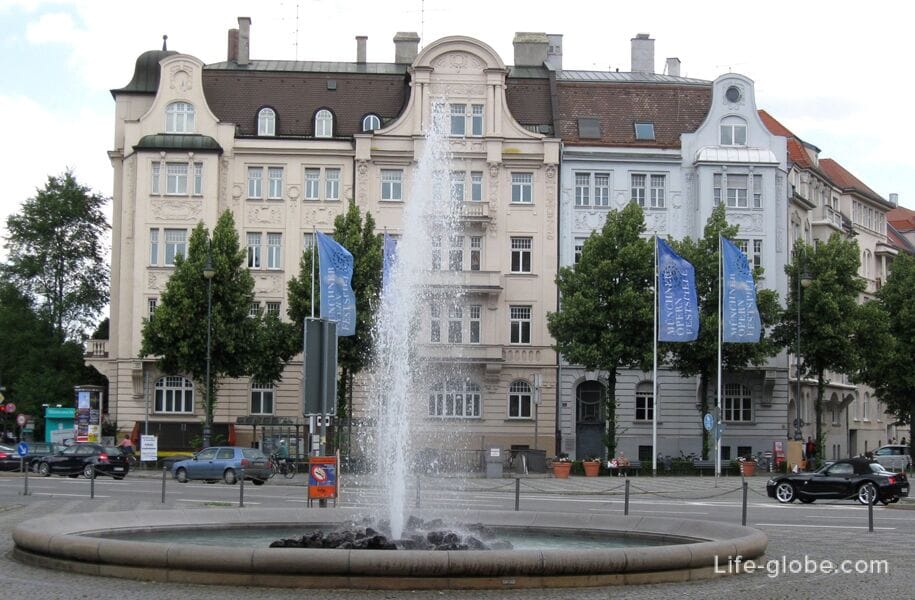
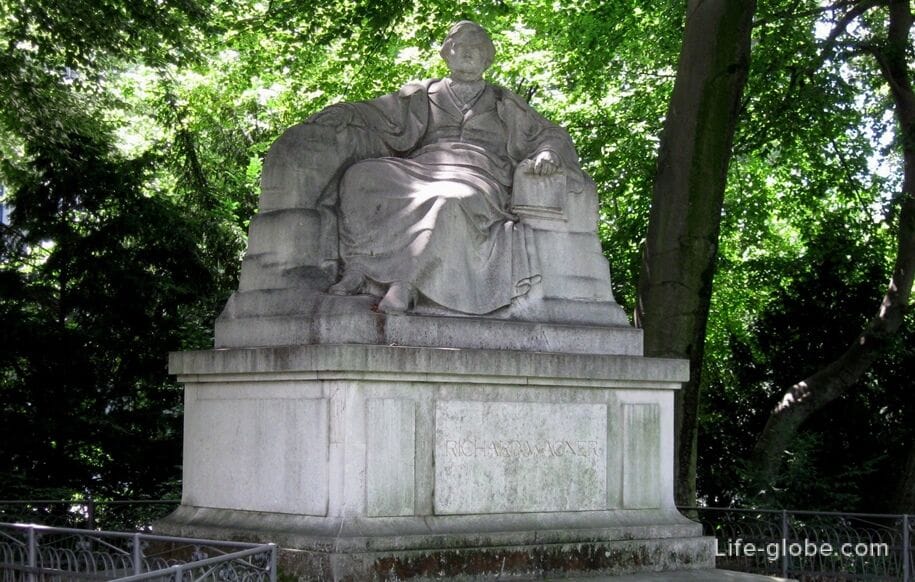
The Church of St. Gabriel (Franziskanerkloster St. Gabriel) is a Catholic parish and monastery of the Franciscan Church.
The Shrine was built in the years 1925-1926, repaired and renovated in 1980-1981 and redesigned by max Faller in the chancel.
The Church is faced with red brick, has a bell tower with a height of 45 meters.
The interior of the Church corresponds to the early Christian Basilica. The Church is the body.
The Church is located along Prinzregentenstrasse, at Versailles Strasse, 20 (Versailler Straße 20).
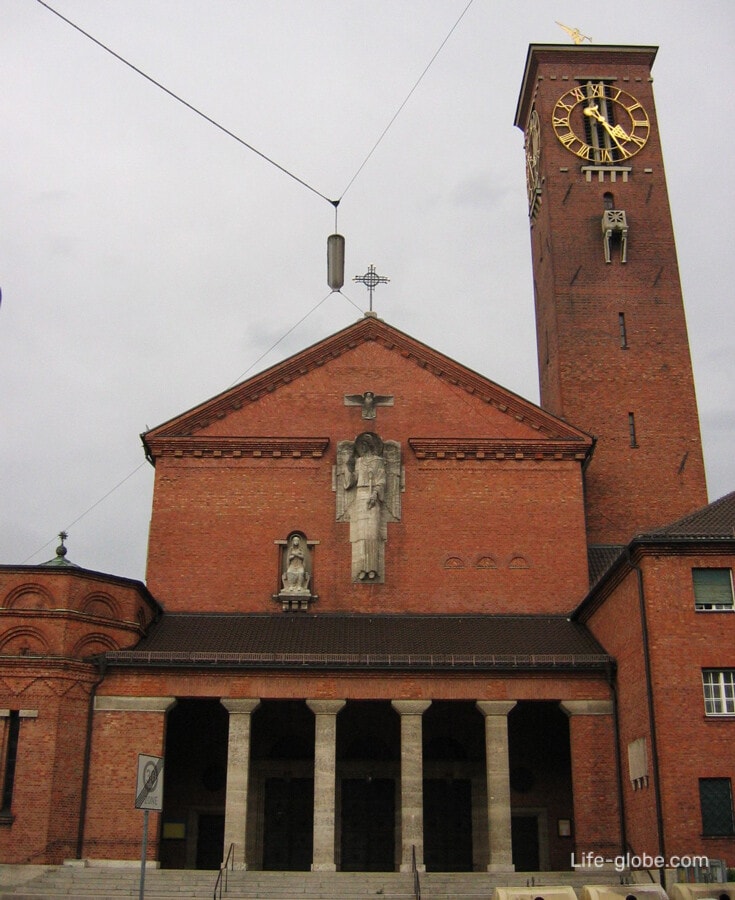
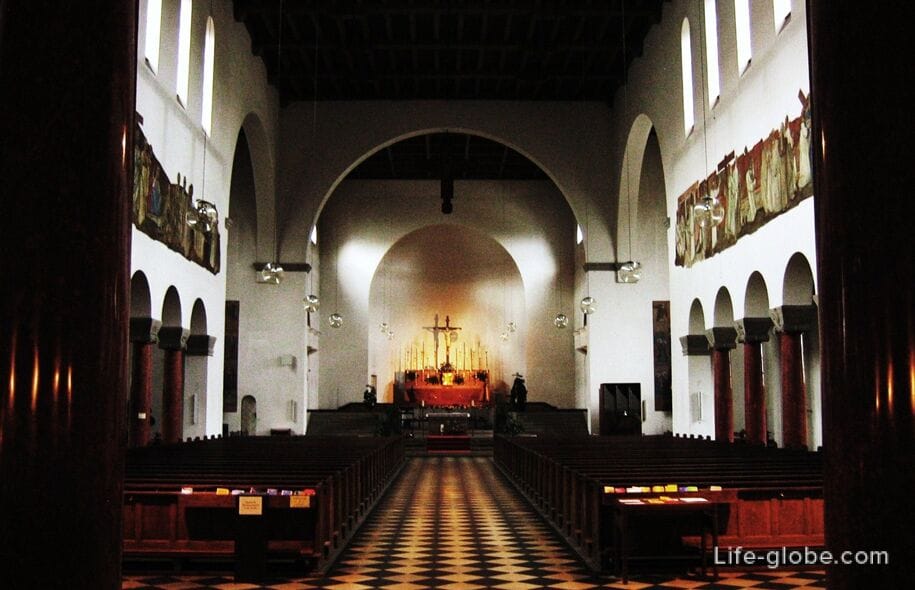
5 star hotel München Palace features a restaurant, a bar, a sauna, a steam bath, a gym, free Wi-Fi and Parking.
In the rooms: parquet floors, a free Minibar, a flat-screen TV and a marble bathroom.
Room rates may include Breakfast. Link to the hotel

The Hyperion hotel München features a restaurant, bar, gym, tour Desk, free Wi-Fi, Parking and rooms for conferences.
In rooms: air conditioning, sports Sky channels, tea/coffee facilities, a design armchair, a Desk, a safety Deposit box and bathroom with rain shower and Underfloor heating.
The hotel has rooms with panoramic views of the city.
Room rates may include Breakfast. Link to the hotel

All accommodation in Munich, including Prinzregentenstrasse near the street and in the city centre, you can view and book here